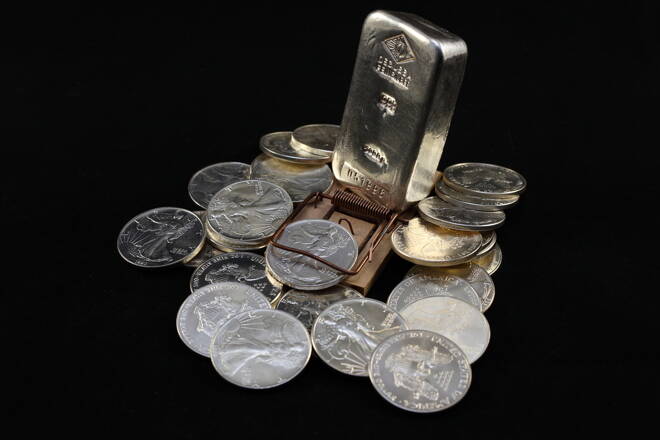Advertisement
Advertisement
Silver Prices Fell Following Less Hawkish Fed Announcement
By:
Silver prices face downward pressure as rate hikes underpin a stronger dollar.
Key Insights
- Silver prices pulled back as yields surged.
- Treasury yields surge to four-year highs following the FOMC meeting.
- Oil prices extended gains as the EU laid out plans for an embargo on Russian oil in six months.
Silver prices ease despite less hawkish Fed statement. The dollar recovered after falling sharply yesterday. Benchmark yields surged after the 50-basis point rate hike.
The ten-year treasury yield rallied to 3.09% following the FOMC meeting. Gold prices move higher on the Fed’s statement after facing selling pressure. Oil prices rallied as the EU stated its plan for an embargo on Russian oil.
European sanctions offset the uncertainty over Chinese demand due to Covid lockdowns.
The FOMC hiked rates by 50-basis points at the meeting on Wednesday, but Fed Chair Powell made clear that a 75-basis point move was unlikely at the next meeting. This situation caused the dollar to ease, while bond yields extended gains.
However, Powell stated that the main goal is to rein in inflation, giving the dollar and yields upside momentum.
Initial jobless claims rose to 200,000 from the previous 181,000. Productivity fell by 7.5% in the first quarter. However, a tightening labor market will keep inflation elevated.
Technical Analysis
Silver prices fell below the $23.00 level despite the Fed’s less aggressive monetary policy. Despite that ruling out a 75-basis point hike removed greater downside to precious metals, the Fed’s goal to reduce inflation weighs on silver prices.
Support is seen near the February 3rd low near $22.0. Resistance is seen near the 10-day moving average of 23.1. Short-term momentum is negative as the fast stochastic had a crossover sell signal.
The medium-term momentum turned negative as the histogram prints negatively with the MACD (moving average convergence divergence). The trajectory of the MACD histogram is in negative territory, which reflects the downward trend in price movement.
About the Author
David Beckerauthor
David Becker focuses his attention on various consulting and portfolio management activities at Fortuity LLC, where he currently provides oversight for a multimillion-dollar portfolio consisting of commodities, debt, equities, real estate, and more.
Advertisement
